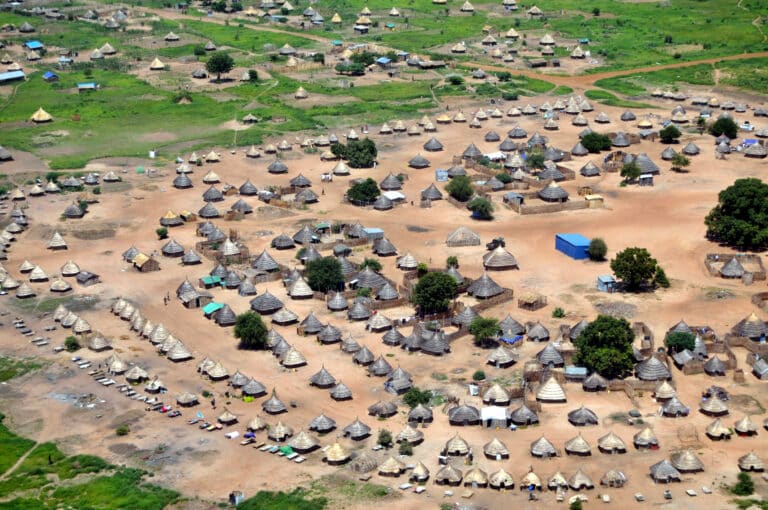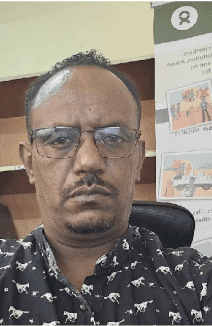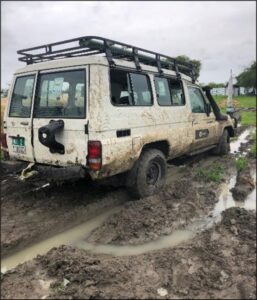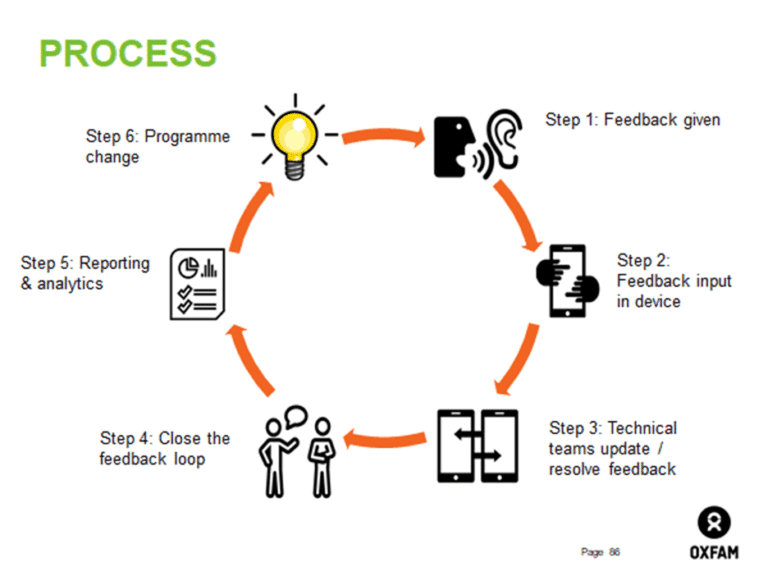How Oxfam built a scalable digital Feedback, Complaints and Response Mechanism (FCRM) with SurveyCTO


Meet Oxfam
Oxfam is an international non-profit organization that combats inequality to end poverty and injustice around the world. Oxfam has 21 member organization affiliates who coordinate and lead this fight via the Oxfam International Secretariat. Each affiliate is independent, contributing its own strengths and expertise to the confederation to achieve Oxfam’s shared goals.
Offices: Boston, Massachusetts; Washington, D.C.;
Current Oxfam affiliates: How we are organized.
Sector: International development
Use case: International development
Employees: 100+
The Challenge: Gathering community-based feedback in the field
Gathering feedback from recipients of development programs (often called beneficiaries) is critical to the success of international development and humanitarian aid programs. No matter how well-designed an organization’s program, beneficiaries must always be given the opportunity to report personal problems, and issues that they are experiencing within an intervention or program. This is important for beneficiary safety, and for the integrity of development organizations.
Traditionally, most organizations captured this data through simple pen and paper systems. But as digital innovations for fieldwork expanded, capturing feedback and complaints in a digital Feedback Complaints and Response Mechanism (FCRM) has become increasingly popular.
With more than 30 years of experience working to alleviate poverty and combat injustice, Oxfam deeply understands the need for transparent feedback systems to encourage community engagement and adaptive management for beneficiaries. Historically, they relied on pen and paper to capture feedback in remote areas, but a few years ago, they decided to pilot an FCRM in South Sudan.
Oxfam’s work in South Sudan delivers humanitarian aid to people affected by conflict and natural disasters through building resilience, supporting women, and empowering communities towards good governance and citizenship. Creating and introducing effective systems for gathering and aggregating feedback in these programs is extremely important, and Oxfam used a pen and paper system for this in South Sudan for many years. However, they often ran into the challenge of beneficiaries not feeling comfortable reporting problems or giving negative feedback directly to organizational staff.
Abreham Fisseha, Programme Quality – MEAL Coordinator for Oxfam in South Sudan, explains more. “We wanted to introduce communities to feedback and complaint collections through community representatives. But we were having difficulty getting regular updates from those field teams. We didn’t have real-time information.”
To add to this issue, Abreham also pointed out that “South Sudan is a country with very limited road access, low level of mobile network coverage and low internet connectivity. There are power problems everywhere.”

The Solution: SurveyCTO's case management features and PowerBI integration
To combat this lack of connectivity and make it easier for local communities they worked in to provide feedback, Oxfam’s South Sudan team created and piloted a digital feedback management system to obtain real-time, community-based feedback and complaints as a part of South Sudan’s overall monitoring, evaluation, accountability and learning (MEAL) practices. They also implemented a system of recruiting volunteers from the local community to directly gather these feedback and complaints.
To build the FCRM, Oxfam used SurveyCTO, incorporating our case management feature and using our API to set up an integration with PowerBI to create interactive dashboards, and our encryption capabilities to protect data and ensure beneficiary safety.
On the ground, the FCRM worked like this: Each complaint or point of feedback was added as a case in the field by community representatives. Those cases were automatically made visible to designated Oxfam staff in a dashboard, who would then follow up on the problem. Once the issue was resolved, the case would be closed.

"The special feature of our system was that community representatives were a part of the feedback collection, apart from Oxfam staff. So we selected some community members and entered them into the system, and showed them how to use digital devices. And then they were helping us in collecting feedback from the community. Having a community representative in that process eases the communication."
Abreham Fisseha
The Results: A successful digital feedback loop
The FCRM pilot was a success in South Sudan. The system met Oxfam’s goals of getting community representatives involved in the feedback process in South Sudan while digitizing the feedback loop between their organization and people on the ground. Using SurveyCTO, this system is easy to use in the field for staff, but technically sophisticated on the back end, providing the visualization options and data security that Oxfam needed.
The FCRM’s usage has not been limited to South Sudan, either. Over the past few years, Oxfam has successfully introduced case management-based FCRMs to a total of twelve countries: Iraq, Jordan, Lebanon, Mozambique, Myanmar, OPTI (Occupied Palestinian Territory and Israel), Philippines, Somaliland, Somalia, Syria, Yemen, and South Sudan. While each FCRM is used a little differently, and levels of usage vary from country to country, the overall time-saving and confidence-boosting benefits have been seen throughout the different countries.
Oxfam says that the transition to the FCRM was time-saving and confidence-boosting for their staff on the ground in multiple countries where it has been set up. “When we used SurveyCTO’s API with PowerBI to create interactive dashboards, this was a powerful moment for our field teams, that they now have this feedback data available at any time,” says Yahya Hussein, Oxfam’s Digital Program Advisor, who worked to pilot the FCRM in Iraq.
The FCRM also allowed Oxfam to incorporate safeguarding and misconduct reporting into its structure to further improve the experience of program beneficiaries, and ensure quick resolution of any serious problems on the ground.
“For us, the achievement is that we are now giving multiple options to the community to report misconduct,” explains Abreham.
There have also been other, more broad-reaching positive impacts of these systems, too. In Ethiopia, one of the countries where Oxfam most recently introduced an FCRM for feedback and accountability, Yahya notes that they have earned some important recognition.
“This FCRM was shown to donors, and they really expressed an interest in and gratitude for having this kind of system. I have learned that it even gave the Ethiopia team the opportunity to apply for more funding.”

Additional resources
Want to learn more about FCRMs, or try building your own? We’ve got you covered!
Learn more about FCRMS from the United Nations in this PDF.
Build your own FCRM with this Workflow from our support team.
